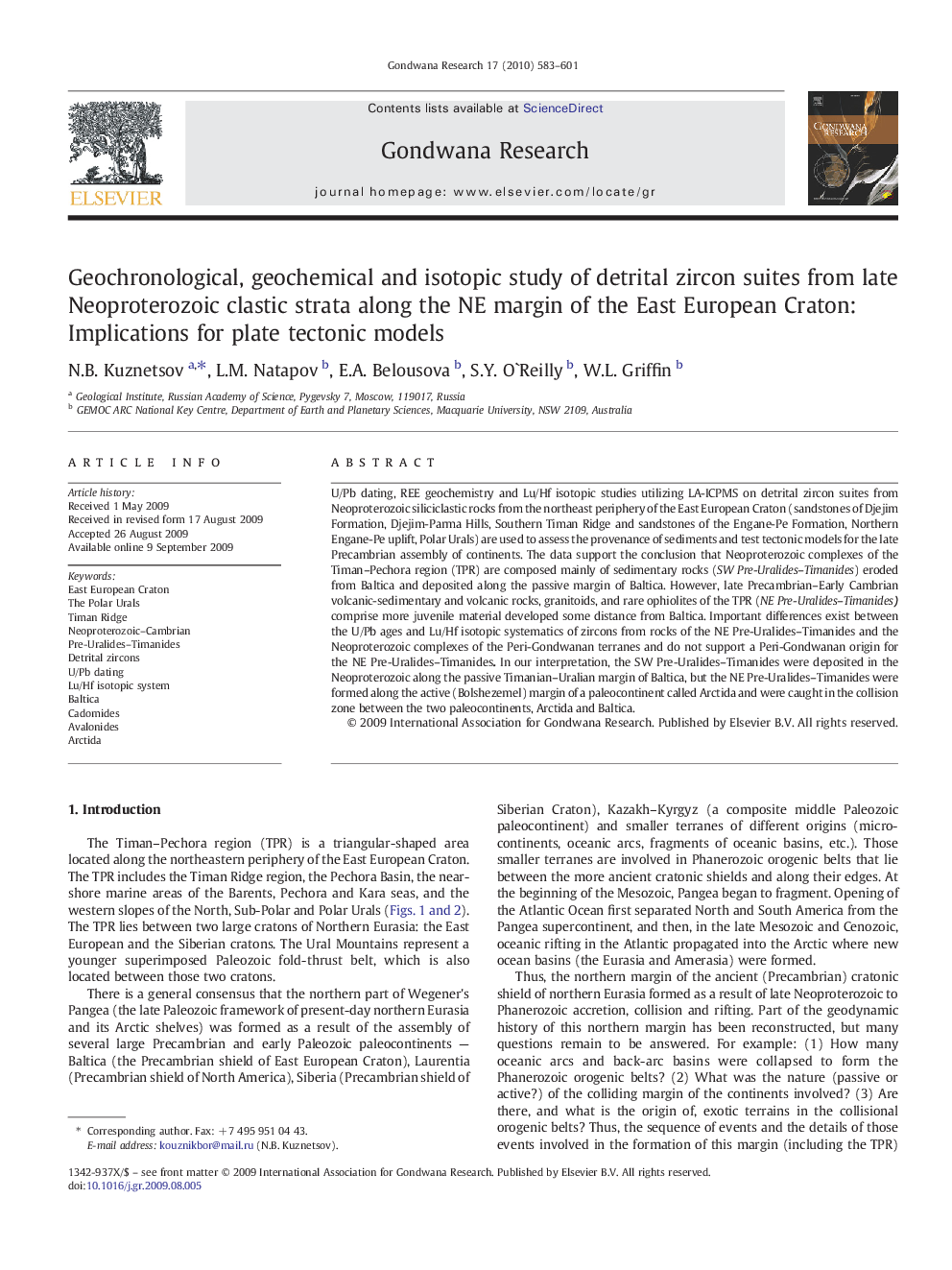| Article ID | Journal | Published Year | Pages | File Type |
|---|---|---|---|---|
| 4727252 | Gondwana Research | 2010 | 19 Pages |
U/Pb dating, REE geochemistry and Lu/Hf isotopic studies utilizing LA-ICPMS on detrital zircon suites from Neoproterozoic siliciclastic rocks from the northeast periphery of the East European Craton (sandstones of Djejim Formation, Djejim-Parma Hills, Southern Timan Ridge and sandstones of the Engane-Pe Formation, Northern Engane-Pe uplift, Polar Urals) are used to assess the provenance of sediments and test tectonic models for the late Precambrian assembly of continents. The data support the conclusion that Neoproterozoic complexes of the Timan–Pechora region (TPR) are composed mainly of sedimentary rocks (SW Pre-Uralides–Timanides) eroded from Baltica and deposited along the passive margin of Baltica. However, late Precambrian–Early Cambrian volcanic-sedimentary and volcanic rocks, granitoids, and rare ophiolites of the TPR (NE Pre-Uralides–Timanides) comprise more juvenile material developed some distance from Baltica. Important differences exist between the U/Pb ages and Lu/Hf isotopic systematics of zircons from rocks of the NE Pre-Uralides–Timanides and the Neoproterozoic complexes of the Peri-Gondwanan terranes and do not support a Peri-Gondwanan origin for the NE Pre-Uralides–Timanides. In our interpretation, the SW Pre-Uralides–Timanides were deposited in the Neoproterozoic along the passive Timanian–Uralian margin of Baltica, but the NE Pre-Uralides–Timanides were formed along the active (Bolshezemel) margin of a paleocontinent called Arctida and were caught in the collision zone between the two paleocontinents, Arctida and Baltica.
